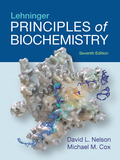
(a)
To determine: The pH of a dilute solution that contains a molar ratio of potassium acetate to acetic acid of 2:1.
Introduction:
The Henderson-Hasselbalch equation depicts the measurement of acidity as
(a)
Explanation of Solution
Explanation:
The
Conclusion:
The pH of a dilute solution that contains a molar ratio of potassium acetate to acetic acid of is
(b)
T determine: The pH of a dilute solution that contains a molar ratio of potassium acetate to acetic acid of 1:3.
Introduction:
The Henderson-Hasselbalch equation depicts the measurement of acidity as
(b)
Explanation of Solution
Explanation:
The
Conclusion:
The pH of a dilute solution that contains a molar ratio of potassium acetate to acetic acid of 1:3 is
(c)
To determine: The pH of a dilute solution that contains a molar ratio of potassium acetate to acetic acid of 5:1.
Introduction:
The Henderson-Hasselbalch equation depicts the measurement of acidity as
(c)
Explanation of Solution
Explanation:
The
Conclusion:
The pH of a dilute solution that contains a molar ratio of potassium acetate to acetic acid of 5:1 is
(d)
To determine: The pH of a dilute solution that contains a molar ratio of potassium acetate to acetic acid of 1:1.
Introduction:
The Henderson-Hasselbalch equation depicts the measurement of acidity as
(d)
Explanation of Solution
Explanation:
The
Conclusion:
The pH of a dilute solution that contains a molar ratio of potassium acetate to acetic acid of 1:1 is
(e)
To determine: The pH of a dilute solution that contains a molar ratio of potassium acetate to acetic acid of 1:10.
Introduction:
The Henderson-Hasselbalch equation depicts the measurement of acidity as
(e)
Explanation of Solution
Explanation:
The
The
Conclusion:
The pH of a dilute solution that contains a molar ratio of potassium acetate to acetic acid of 1:10 is
Want to see more full solutions like this?
Chapter 2 Solutions
EBK LEHNINGER PRINCIPLES OF BIOCHEMISTR
- Which type of enzyme catalyses the following reaction? oxidoreductase, transferase, hydrolase, lyase, isomerase, or ligase.arrow_forward+NH+ CO₂ +P H₂N + ATP H₂N NH₂ +ADParrow_forwardWhich type of enzyme catalyses the following reaction? oxidoreductase, transferase, hydrolase, lyase, isomerase, or ligase.arrow_forward
- Which features of the curves in Figure 30-2 indicates that the enzyme is not consumed in the overall reaction? ES is lower in energy that E + S and EP is lower in energy than E + P. What does this tell you about the stability of ES versus E + S and EP versus E + P.arrow_forwardLooking at the figure 30-5 what intermolecular forces are present between the substrate and the enzyme and the substrate and cofactors.arrow_forwardprovide short answers to the followings Urgent!arrow_forward
- Pyruvate is accepted into the TCA cycle by a “feeder” reaction using the pyruvatedehydrogenase complex, resulting in acetyl-CoA and CO2. Provide a full mechanismfor this reaction utilizing the TPP cofactor. Include the roles of all cofactors.arrow_forwardB- Vitamins are converted readily into important metabolic cofactors. Deficiency inany one of them has serious side effects. a. The disease beriberi results from a vitamin B 1 (Thiamine) deficiency and ischaracterized by cardiac and neurological symptoms. One key diagnostic forthis disease is an increased level of pyruvate and α-ketoglutarate in thebloodstream. How does this vitamin deficiency lead to increased serumlevels of these factors? b. What would you expect the effect on the TCA intermediates for a patientsuffering from vitamin B 5 deficiency? c. What would you expect the effect on the TCA intermediates for a patientsuffering from vitamin B 2 /B 3 deficiency?arrow_forwardDraw the Krebs Cycle and show the entry points for the amino acids Alanine,Glutamic Acid, Asparagine, and Valine into the Krebs Cycle - (Draw the Mechanism). How many rounds of Krebs will be required to waste all Carbons of Glutamic Acidas CO2?arrow_forward
 BiochemistryBiochemistryISBN:9781319114671Author:Lubert Stryer, Jeremy M. Berg, John L. Tymoczko, Gregory J. Gatto Jr.Publisher:W. H. Freeman
BiochemistryBiochemistryISBN:9781319114671Author:Lubert Stryer, Jeremy M. Berg, John L. Tymoczko, Gregory J. Gatto Jr.Publisher:W. H. Freeman Lehninger Principles of BiochemistryBiochemistryISBN:9781464126116Author:David L. Nelson, Michael M. CoxPublisher:W. H. Freeman
Lehninger Principles of BiochemistryBiochemistryISBN:9781464126116Author:David L. Nelson, Michael M. CoxPublisher:W. H. Freeman Fundamentals of Biochemistry: Life at the Molecul...BiochemistryISBN:9781118918401Author:Donald Voet, Judith G. Voet, Charlotte W. PrattPublisher:WILEY
Fundamentals of Biochemistry: Life at the Molecul...BiochemistryISBN:9781118918401Author:Donald Voet, Judith G. Voet, Charlotte W. PrattPublisher:WILEY BiochemistryBiochemistryISBN:9781305961135Author:Mary K. Campbell, Shawn O. Farrell, Owen M. McDougalPublisher:Cengage Learning
BiochemistryBiochemistryISBN:9781305961135Author:Mary K. Campbell, Shawn O. Farrell, Owen M. McDougalPublisher:Cengage Learning BiochemistryBiochemistryISBN:9781305577206Author:Reginald H. Garrett, Charles M. GrishamPublisher:Cengage Learning
BiochemistryBiochemistryISBN:9781305577206Author:Reginald H. Garrett, Charles M. GrishamPublisher:Cengage Learning Fundamentals of General, Organic, and Biological ...BiochemistryISBN:9780134015187Author:John E. McMurry, David S. Ballantine, Carl A. Hoeger, Virginia E. PetersonPublisher:PEARSON
Fundamentals of General, Organic, and Biological ...BiochemistryISBN:9780134015187Author:John E. McMurry, David S. Ballantine, Carl A. Hoeger, Virginia E. PetersonPublisher:PEARSON





